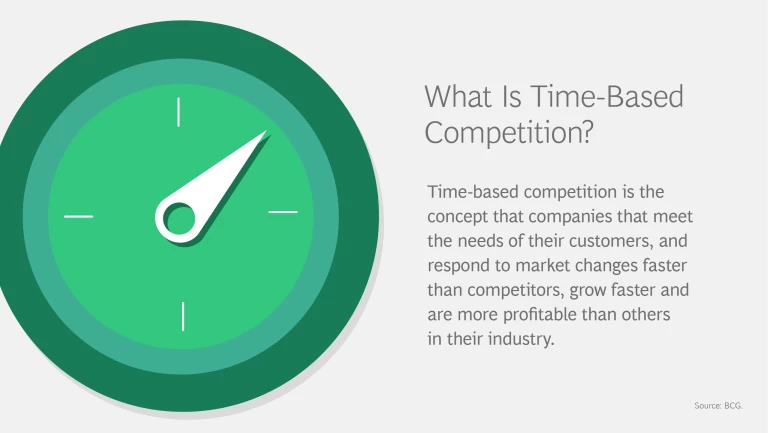Time-based competition is a demonstration of the power of time management, and how companies can use it to gain a competitive advantage. For companies that make best use of time as they respond and adapt to changes in the market and other possible conditions and obstacles, they will gain an adaptive advantage. But time-based competition is about more than just viewing time as a critical resource, it’s about time as the basis of strategy.
The concept was made well known in the business world by BCG’s George Stalk, who first coined the term in a 1988 Harvard Business Review article "Time—The Next Source of Competitive Advantage," and published a follow-up book in 1990, Competing Against Time: How Time-Based Competition Is Reshaping Global Markets.
How Does Time-Based Competition Work?
The adaptive advantages of time-based competition can be gained in all facets of a company’s value chain. To become time-based competitors, companies must execute organizational and structural changes in three key areas:
- Manufacturing. Companies use just-in-time production and flexible factories, leading to fewer employees being needed to produce more goods in less time, with lower costs. By reducing or eliminating time delays, it produces a time-based competitive advantage.
- Sales and Distribution. The next step is to optimize sales and distribution channels to prevent the loss of any time-based gains from refining the manufacturing process. An example of this is a company only shipping what they sell, meaning less storage requirements and fewer employees being needed since there is no inventory.
Innovation and Product Development. Lastly, companies must bring out products faster than their competitors when it comes to innovation cycles. When a company reduces its new product development and introduction cycle, they gain an immediate advantage by bringing the product to market first, helping to shift the balance of power in an industry and forcing competitors to react.
Reducing, or even eliminating, time delays in all three of these areas allows companies to reduce costs, improve quality, and stay closer to their customers—producing a time-based competitive advantage.
Learn More About Time-Based Competition




